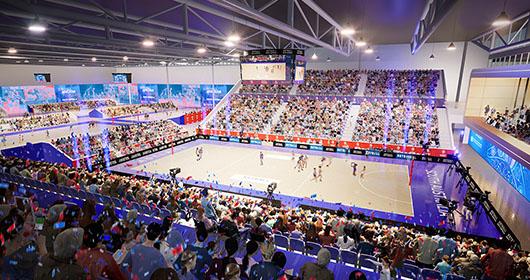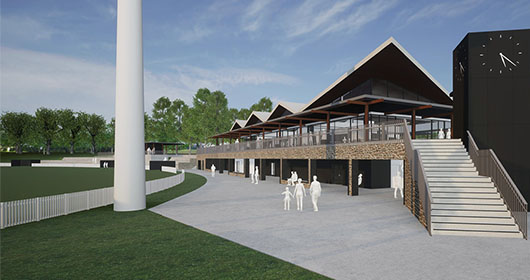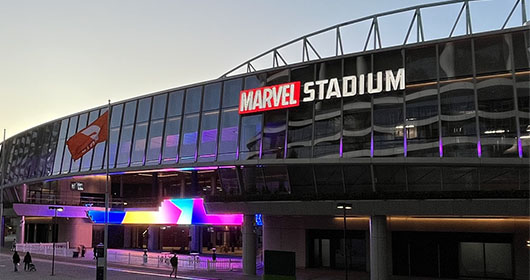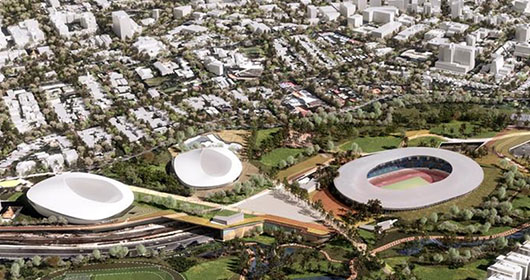Doubt over Melbourne's rectangular stadium
Planning for Melbourne's proposed new rectangular sports stadium is in disarray, with the State Government in a quandary over seating capacity, budget blow-outs and threats of compensation claims by rival venue Telstra Dome.
Well-placed sources have confirmed that the new home for A-League soccer club Melbourne Victory and National Rugby League side Melbourne Storm was close to being scrapped by the Government late last year and does not have the support of senior cabinet members.
Construction giant Grocon yesterday said it believed a Government review of the size and budget of the multimillion-dollar project had put it on hold.
In April, Premier Steve Bracks revealed a scheme by Cox Architects to build a 20,000-seat, $190 million stadium at Edwin Flack field, next to Olympic Park. Builders Grocon, Baulderstone Hornibrook, Abi Group and Leighton were invited to bid.
But now the Government is under intense pressure to increase capacity because of Victory's success and popularity. The club has dominated the A-League and has attracted average crowds of 30,000 in the seven matches it has played at Telstra Dome since quitting the smaller Olympic Park earlier this season.
This week the Government wrote to the bidders flagging an increase in the stadium size and budget.
In the letter, a Major Projects Victoria officer said the Government was "still finalising the overall capacity" that would "allow the final funding arrangements to be finalised". Under the tender deal, a contract was to be let by March 1 and construction finished in 2009. But the letter acknowledges there will be a "delay" in moving to the next stage of the tender process.
Victory has told the Government that a 20,000-seat stadium would be obsolete before it was built, and an embarrassment.
It has not yet signed a deal with the Government to make the new stadium its home and is being hotly courted by Telstra Dome.
The team will play its home matches at Telstra Dome until the end of the 2008-09 season.
Despite the Government brief seeking bids on a stadium with a capacity of 20,000, at least two of the builders have proposed 30,000-seat schemes.
Victory is believed to want a minimum capacity of at least 30,000, which would allow it to play most games at the new venue but move blockbusters to the larger Telstra Dome.
Worsening the predicament is a deal the Government struck with Telstra Dome during the early planning for the Docklands venue. Telstra Dome can seek compensation if the Government opens a stadium of 25,000 or more seats within 10 years of its opening in 2000.
The new stadium's future is looking increasingly uncertain, with senior Government, sporting and building industry sources agreeing that Spring Street is "in a pickle".
"They've painted themselves into a fine old corner," one development source said.
A Government insider confirmed that a seating capacity of 27,750 could be accommodated in the existing Cox design. But greater size would require a total redesign and create a huge cost blow-out.
The project, believed to have been initially costed at $80 million and last year officially at $190 million, is now believed to be edging towards $250 million.
Sources say bureaucrats working on the project have gone back to the Government, seeking more money to cover an expansion.
"Obviously, if we build more seats more money will be required, yes," a senior Government source said.
Without Victory, which would play a minimum of 10 home A-League matches a season plus high-profile Asian Champions League matches, the project looks doomed.
Government, building industry and sporting sources agree it is highly unlikely the Government would spend so much money for a stadium for rugby league games attracting an average crowd of about 10,500.
Grocon spokeswoman Jane Wilson the company looked forward to the Government resolving its capacity and financial issues soon.
Government spokesman Licardo Prince said Melbourne Victory's success had affected crowd numbers. He said the Government was discussing capacity issues with tenderers but remained committed to a 20,000-seat stadium, with scope to expand to 25,000.
Telstra Dome chief Ian Collins declined to comment.
Some sports industry observers believe the simplest solution would be to spend a much smaller sum refurbishing Olympic Park for Melbourne Storm and other tenants. Soccer could be catered for through the construction of a 40,000-plus stadium elsewhere that could also host Socceroo matches against high-profile opponents.




